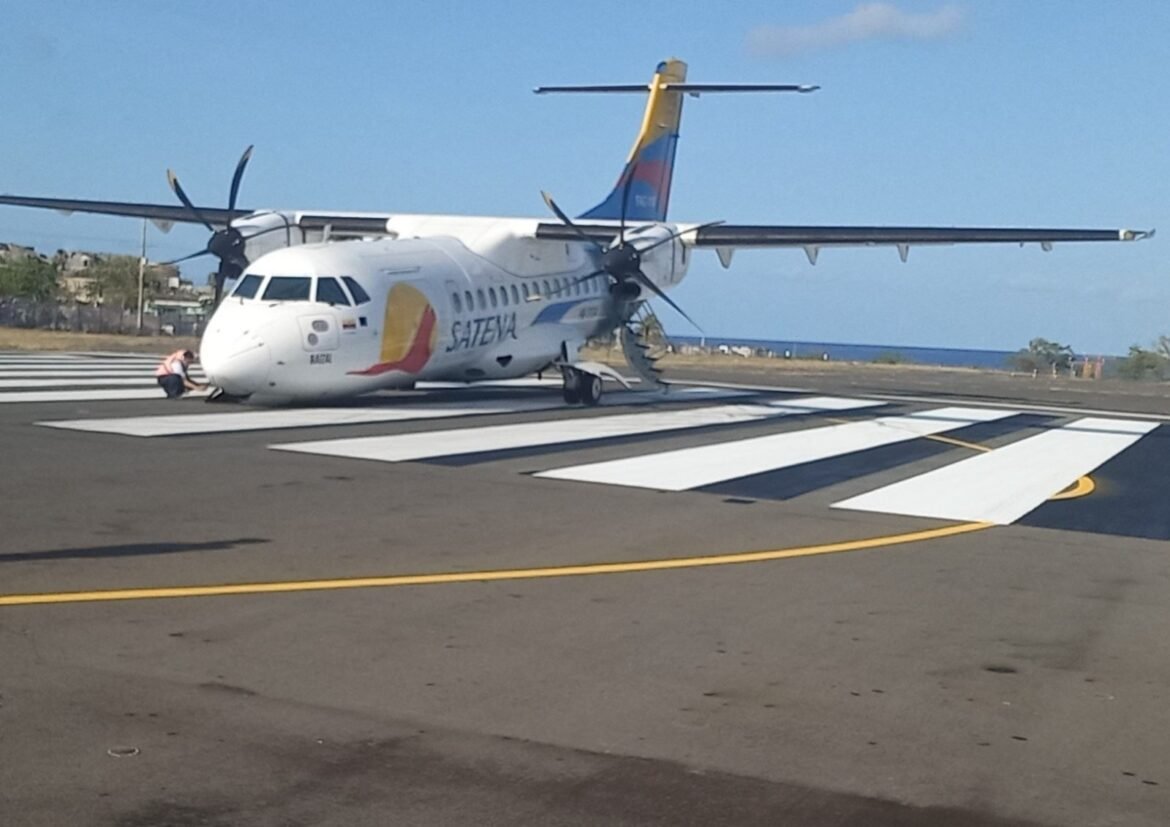Air travel is a marvel of engineering and precision, but even the most sophisticated machines have their limits. On Wednesday, May 1, 2024, a Satena flight operating an ATR 42-500 at Gustavo Rojas Pinilla International Airport (ADZ/SKSP) demonstrated a crucial lesson in aircraft maneuvering, highlighting the delicate balance between control and stress.
As the aircraft prepared for departure from runway 06 at Gustavo Rojas Pinilla International Airport, it embarked on a routine backtrack maneuver. However, as it reached the turn pad and attempted a tight 180-degree turn, disaster struck. The nose gear collapsed under the stress of the maneuver, resulting in a dramatic scene on the tarmac.
This incident offers a poignant reminder of the challenges inherent in aviation, particularly during ground operations. While aircraft are designed to withstand immense forces during flight, they are less resilient when subjected to abrupt and excessive stresses on the ground. In this case, the attempt to execute a sharp turn proved too much for Mr. Nose Wheel to bear.
But why does the nose gear collapse when the rest of the plane is spun in a tight turn? The answer lies in the design and limitations of the aircraft’s landing gear. The nose gear, responsible for supporting the weight of the aircraft’s front end, is not built to withstand lateral forces generated during sharp turns. When these forces exceed the gear’s capacity, as was the case in this incident, the result is a collapse that can have serious consequences.
Gustavo Rojas Pinilla International Airport, located in the archipelago of San Andrés, Providencia, and Santa Catalina, serves as a vital gateway for air travel in the region. Like many airports around the world, it sees a constant flow of aircraft performing complex maneuvers on its runways and taxiways. However, as this incident demonstrates, even routine operations can pose risks if not executed with care and attention to detail.
In the aftermath of the nose gear collapse, investigations will undoubtedly seek to uncover the root causes of the incident and identify measures to prevent similar occurrences in the future. Whether through enhanced training for ground crews, revised procedures for aircraft maneuvering, or modifications to aircraft design, lessons learned from this incident can help improve safety across the aviation industry.
Ultimately, the story of Mr. Nose Wheel’s stressful ordeal serves as a sobering reminder of the importance of vigilance and respect for the inherent limitations of aircraft. As pilots, ground crews, and aviation professionals strive to keep the skies safe, understanding and mitigating the risks associated with ground operations is paramount. Only by working together can we ensure that every flight, from takeoff to touchdown, is a safe and successful journey

